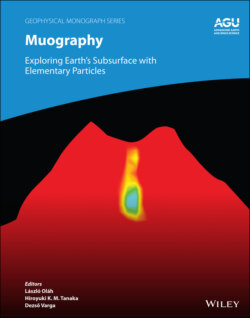Читать книгу Muography - Группа авторов - Страница 53
3.6 REGULARIZATION PARAMETERS
ОглавлениеSmoothing constraints introduced as in equation 3.13 and 3.14 successfully reduce the number of unknown parameters. However, one practical difficulty is to give proper correlation length (λ) and variance of prior density (σ ρ ), because these parameters should be given “before” the inversion is performed. Barnoud et al. (2019) use the cross‐validation method to avoid overfitting in parameter estimation. The idea of the cross‐validation is to randomly pick one data out of n muon + n grav data (leave‐one‐out cross‐validation) and apply the inversion analysis to the remaining dataset for various sets of (σ ρ ,λ); the optimal set of (σ ρ ,λ) that reproduces the originally extracted data is chosen in the end. Instead of picking one data, it is possible to divide the dataset into small k subsets and extract the one subset out of k (k‐fold cross‐validation). They examined this idea for an actual observation setup at Puy de Dôme (France), where muography is performed from three directions and 650 points of gravity data are available (Ambrosino et al., 2015; Portal et al., 2016). From their numerical test, the above two cross‐validation methods are proved to be feasible when the density profile in the mountain is randomly distributed in a Gaussian way.
